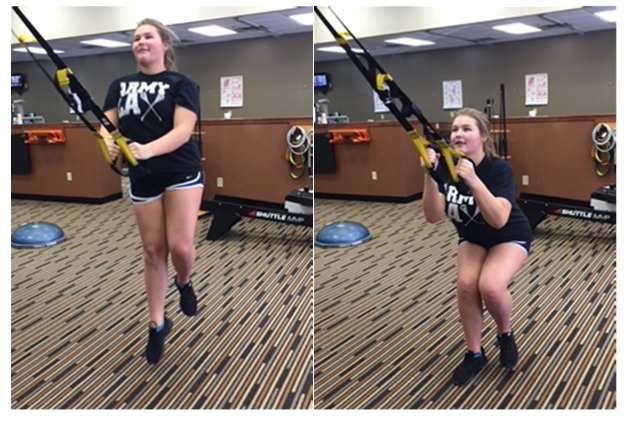
A torn ACL is one of the most dreaded injuries for athletes. Often, it leads to surgery and a long rehabilitation period that requires them to take a break from their sport. However, with the right treatment, an ACL and meniscus injury doesn’t have to be career-ending, nor lead to future knee problems.
Ask any athlete what injury they worry about and dread the most and the answer is probably a torn ACL. It’s one of the most difficult injuries to come back from, often needing surgery and long rehabilitation period. Sometimes, if not rehabilitated or treated properly, a torn ACL can lead to future knee problems like knee instability, dysfunction, pain, and even another injury.
Although the injury is dreaded by all athletes, there are some athletes that are at a higher risk of tearing their ACL. A recent study found that athletes in youth sports are particularly vulnerable to an ACL injury since the knee and supporting tendons, ligaments, and muscles are still growing. Girls in their teens, the researchers found, were at the highest risk.
However, despite the alarming statistics, it’s becoming more and more common for athletes to make a full recovery from a tear and ACL surgery. Furthermore, a focus on ACL injury prevention is helping coaches, athletic trainers, and physical therapists not only prevent knee injuries but devise a rehabilitation program resulting in stronger knees and a lower risk for future injuries.
OSR’s Comeback Athlete of the Week, Audrey Carson, experienced firsthand the seriousness of an ACL tear. However, despite her long road back, she recovered stronger than ever.
A Long Road Back From A Torn ACL
It was during basketball training that Audrey tore her ACL. Although most of these injury types are the result of player-to-player contact, Audrey had just stepped on her knee wrong, leading to a torn ACL and meniscus.
“I don’t know what happened because it just happened so fast,” she recounts of her injury that took place last summer. “I just took a quick step and it was the wrong step. It resulted in surgery and physical therapy for the next eight months.”
It was certainly a long road back for Audrey, who recently graduated from OSR Physical Therapy’s rehabilitation program. The program uses jumping and strengthening exercises, as well as agility and balance training. However, it wasn’t until a few months into physical therapy that Audrey was able to start on harder exercises.
“My physical therapy started with me just trying to flex my quad, which was really difficult. My therapy increased very slowly. But I was eventually walking without crutches in about two months and then a brace for three months,” she says. It took three months after being off of crutches for her leg to be strong enough for her to walk on her own without the need of assistance.
Even so, when the brace finally came off, her knee was weak and unstable, she said. “I was worried it would never feel the same,” recounted Audrey.
However, with the right rehab program, Audrey found herself feeling stronger and more stable than ever.
How To Prevent An ACL Injury
Audrey says that because of how long it took her to recover, she’s afraid of reinjuring her knee.
ACL injuries are one of the top injuries that can lead to future knee problems like instability and dysfunction. If it’s not rehabilitated fully or properly these problems can result in muscle weaknesses. Muscle weaknesses and imbalances can contribute to future injuries, even another ACL tear. This is why strengthening, as well as proper form and balance, are so important to prevent future knee injuries.
Here are some tips for preventing ACL injuries:
- Spot your weaknesses that can lead to injury. Muscle imbalances, dysfunction, improper movement, and bad form are all major contributors to ACL tears and other knee injuries. A weak core and hips, for example, can be problematic in knee functionality and strengthening.
- Do strengthening exercises that target those weaknesses. When you incorporate targeted strengthening exercises, you’re lowering your risk of a knee injury substantially.
- Get evaluated by an athletic trainer who is skilled in spotting weaknesses. They will not only evaluate you properly. They will also recommend the right training program as well as ensure you’re doing the exercises correctly.
Strengthening Is Key To A Fully Recovery And Prevention
Strengthening the right muscles is essential when it comes to injury rehabilitation and prevention. Without strong muscles, especially supporting muscles of high-risk injury areas, you not only can get injured but reinjured in the future. A full recovery means targeting those weak areas as well as working on muscle stamina, Audrey’s physical therapist told her.
“My physical therapist recommended that I continue a lot of the same strengthening exercises at home to prevent future injuries – like squats, lunges, and other leg exercises,” Audrey said. “The biggest thing I learned from her and physical therapy, in general, was that in order to stay injury-free, I needed to keep my muscles strong. I also found out that endurance and stamina have a lot to do with injury prevention so that when you get tired you can still get your muscles to work the way they should.”
Audrey may still be worried about reinjuring knee. However, those worries keep her doing the strengthening exercises taught to her by OSR Physical Therapy.
“I’m always worried that I’m going to reinjure my knee just because of everything I’ve been through; so I’m a little hesitant to go back to playing basketball,” she said. “But my physical therapist is always assuring me that as long as I keep my legs strong, I’ll be fine.”


